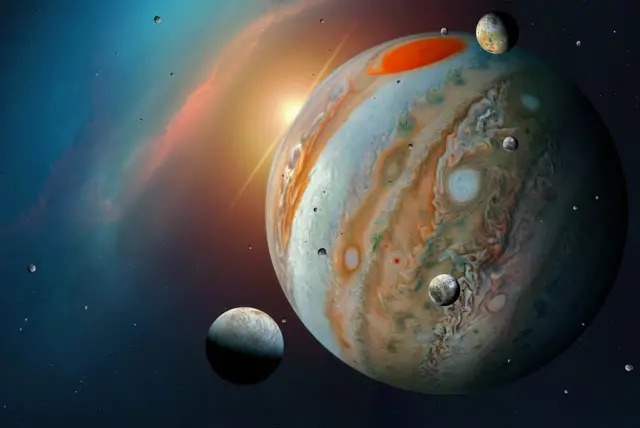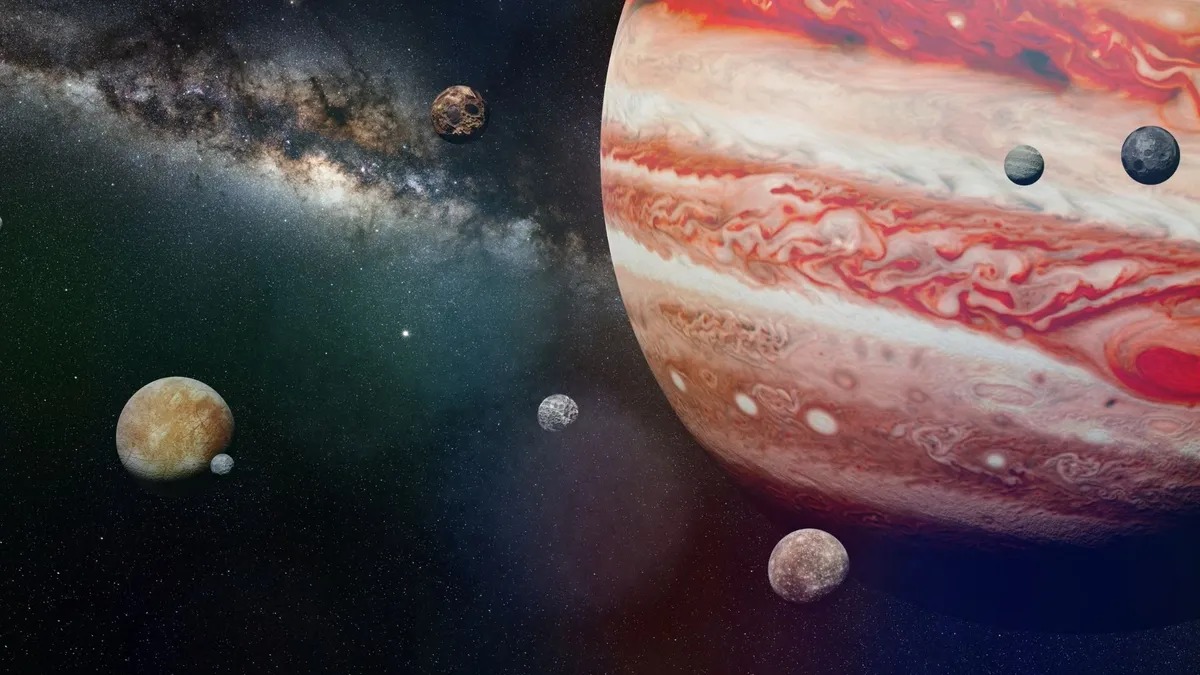Because it is the giant planet in our solar system, Jupiter already holds the title of king of the planets. The gas giant currently also boasts the most well-known moons.
There are currently 92 verified moons orbiting Jupiter due to 12 new moons that astronomers have discovered.
Astronomer Scott Sheppard of the Carnegie Institution for Science and his group made the findings while observing. In August 2022, they used the Dark Energy Camera mounted on the Blanco telescope at the Cerro Tololo Inter-American Observatory in Chile. In September 2021, they used the Subaru Telescope in Hawaii.
The more distant targets that Sheppard and his team have been looking for in the Kuiper Belt, a ring of icy objects around the sun that sits past the orbit of Neptune on the edge of the solar system, were in alignment with Jupiter and its natural satellites.

Did you read this?
While our primary survey is seeking planets in the outer solar system beyond Pluto, we have also incidentally surveyed for new moons around Jupiter. Sheppard
Because anything near Jupiter would be moving at the same speed as the gas giant, the team could distinguish Jupiter and its surrounding objects from objects farther out in the solar system. The solar system's far-off things cannot move as swiftly as those moving beside Jupiter.
The scientists used the Magellan Telescope in Chile to carry out follow-up observations for the 12 new moons, which took them nearly a year to confirm.
Since their discovery is only recent, all of the moons still need names; moreover, the Minor Planet Center will give each one a number in the coming months.
On July 5, 2022, the NASA Juno spacecraft took this infrared image of Jupiter's volcanic moon Io while it was about 50,000 miles (80,000 kilometres) away. This infrared image used information gathered by Juno's Jovian Infrared Auroral Mapper (JIRAM) instrument. The brighter the colour in this image, the higher the temperature JIRAM measured.
.jpeg)
A NASA spacecraft is about to travel to the solar system's most volcanic world.
Minor planets, comets, and celestial rocks are all tracked by the Minor Planet Center. Such celestial objects' identification, naming, and organization under the authority of the International Astronomical Union handle orbital information.
Half of these new moon finds are more extensive than 1.5 miles (2.4 kilometres), which the International Astronomical Union permits so that they will receive names, according to Sheppard.
looking for new moons
Astronomers have had to cope with the problem of glare and dispersed light impacting the area where moons can exist because Jupiter is a bright planet.
With the aid of technology, it is becoming simpler to study Jupiter and its surroundings in greater detail.
Sheppard and his team are currently tracking "many, many more moons around Jupiter," but additional observations are required before they can declare their findings.
Future expeditions can find their destinations by discovering other moons around Jupiter and figuring out their orbits. Jupiter and a number of its moons will be visited this decade by the NASA Europa Clipper mission and the European Space Agency's Jupiter Icy Moons Explorer, both of which will launch in April. The tasks may also pass through the recently found moons on the route.

On September 29, 2022, NASA's Juno spacecraft flew by Jupiter's moon Europa and acquired images of its intricate, ice-covered surface. The spaceship approached within around 219 miles at the closest range (352 kilometres).
During a flyby, a NASA spacecraft snaps a photo of an ocean world orbiting Jupiter.
According to Sheppard, these spacecraft can only travel to the outer moons once they hit Jupiter's gravitational field.
"We're hoping that if we locate enough, one of them will happen to be in the spacecraft's path so it can take close-up pictures. Because they are the final survivors of the population of objects that developed in the vicinity of the giant planets as the rest of the material was merging into the worlds, these outer moons are crucial to comprehend.
The most prominent planets in our solar system reside in the giant planet area, which is presently empty because the worlds ate up all of the material during their formation.
According to Sheppard and his team, these moons are the remains of at least seven larger moons that disintegrated during collisions with other moons, asteroids, or comets. According to Sheppard, splitting these moons produced hundreds of smaller moons.
Even scientists were surprised by how well the Webb telescope captured photographs of Jupiter.
The moons are leftovers from the gas and dust disk that surrounded Jupiter after it formed; the planet then engulfed and dragged most of the material into its orbit. These planet-forming elements can illuminate the solar system's early history.
Sheppard's team's speciality is finding moons around the giant planets in our solar system.
He stated in an email that "in total, we have participated in 70 moon discoveries around Jupiter." There have been 43 discoveries on Saturn, two on Uranus, and one on Neptune for the other planets.
There are 83 moons on Saturn, 27 on Uranus, and 14 on Neptune.
The crew also keeps watch of numerous other moons orbiting Saturn, but because the ringed planet is farther away from Earth, it is more difficult to see them.
Uranus and Neptune have a lot of small moons, but because those planets are further away, it is more difficult to find the smaller moons around those planets, according to Sheppard.









